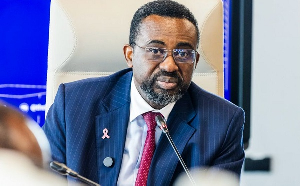Rice farmers at Golinga in the Northern Region that have implemented proper agricultural practices as well as new technologies and management practices for rice production expect to more than double yields in a couple of months’ time.
Formerly, farmers used to broadcast about 60kg of rice seeds on an acre of land, but under the new programme, Sustainable Rice Intensification, the farmers nursed just six kg of seeds and transplanted the seedlings to an acre of land.
Also, the application of chemicals and organic fertilisers reduced considerably but yielded more output. For example, instead of applying three bags of NPK fertiliser per acre, they now apply only two bags of fertiliser.
“Now, nobody can convince me to go back to broadcasting of seeds anymore. The new method is so good and I can’t wait to see the output. Already, I can see that the weight of the grain is heavier than the weight of the grain on a broadcasted field.
“Also, working on the transplanted field is much easier because it is well spaced-out, so I can go through and easily uproot weeds. Formerly, after broadcasting, it was difficult walking through the farm because there was no proper spacing,” said Mahamudu Yahaya, a two-acre farm owner.
Championed by the Ghana Rice Inter-professional Body (GRIB), Green OK, Wienco, Council for Technical and Vocational Education and Training (COTVET), Skills Development Fund (SDF) and the USAID-funded Agricultural Development and Value Chain Enhancement (ADVANCE) project, 10 rice demonstration sites at the Golinga Irrigation Project Scheme were introduced to the new methods.
At a farmer’s field-day at Golinga, 55 farmers of the Golinga Farmers’ Cooperative Union who are yet to adopt the new methods were brought together to observe the rice fields that have benefitted from the programme.
The farmers were shown how to use Sustainable Rice Intensification (SRI) transplanting methods, as against the traditional broadcasting method. “From the next growing season, I will no longer broadcast because it wastes seeds and reduces yields. I used to doubt the viability of this project, but with what I have seen I will commence transplanting next year,” Amina Yahaya, one of the farmers, said.
Atchulo Abukari, the agricultural extension officer in charge of the project, said when they tried introducing the new concepts to them, most of the farmers were reluctant; “but I am happy they have now seen the difference, and I guess my work will now be a bit easier”.
The USAID/ADVANCE project supports demonstration sites to promote innovations and to introduce management practices to smallholder farmers. With the support of private sector companies, the project has set up close to 180 demonstrations sites for maize, rice, and soybean in the Brong Ahafo, Northern, Upper East, and Upper West Regions. Twenty-four of these sites in the Northern Region are rice demonstrations -- four of which are rain-fed rice.
“The farmers are seeing the difference between the SRI plots and their traditional broadcasting method, and are happy to see its impact on yields. I am also happy with the private sector involvement with USAID/ADVANCE to set up the demonstration plots,” Paa Kwasi Forson, acting Executive Secretary of GRIB, said.
The ADVANCE programme is a USAID-funded project that supports the government’s commitment to strengthening food security.
The project, which is focusing on rice, maize and soybean particularly in the northern sector, adopts a value-chain approach -- whereby smallholder farmers are linked to markets, finance, inputs and equipment services as well as information through relatively larger nucleus farmers who have the capacity to invest in these chains.
Business News of Tuesday, 8 October 2013
Source: B&FT












